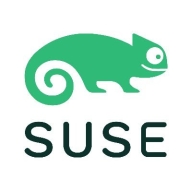

SUSE Linux Enterprise and Bigeye compete in distinct but complementary categories; SUSE targets enterprise Linux environments while Bigeye focuses on data observability. Based on features and capabilities, Bigeye seems to have the advantage with its specialized tools for data reliability and quality.
Features: SUSE Linux Enterprise emphasizes support for cloud, on-premises, and hybrid environments with a focus on security and compliance. It offers robust operating system features known for their stability and scalability. Bigeye specializes in data pipeline observability with automated data monitoring, anomaly detection, and resolution capabilities. Its advanced data quality tools make it stand out in this area.
Ease of Deployment and Customer Service: SUSE Linux Enterprise offers a straightforward deployment process with extensive support for complex IT setups. Bigeye is designed for fast setup within data ecosystems and provides proactive assistance. Both excel in customer service with Bigeye offering additional value due to its rapid deployment suited for data-centric operations.
Pricing and ROI: SUSE Linux Enterprise pricing reflects its stability and support, providing good ROI through scalability. Bigeye is competitively priced for its data tools, ensuring high ROI for organizations focused on data health. While SUSE has a higher initial cost, its long-term benefits align with large enterprise needs. Bigeye offers cost-effective solutions with quick returns ideal for data-oriented companies.

Whether your data stack is on-prem, hybrid, or cloud, Bigeye delivers AI-driven anomaly detection and comprehensive lineage to ensure the data powering your business stays reliable by default.
SUSE Linux Enterprise offers features like YaST for server management, seamless integration with Oracle and SAP, and a robust security setup. Renowned for stability, it efficiently supports workstations, SAP workloads, and cloud migrations across diverse industries.
SUSE Linux Enterprise is known for its lightweight design, high performance, and ease of installation. Its flexible architecture supports extensive documentation and efficient patching. The system uses the BTRFS file system for effective virtualization, and community support is significant. However, challenges include package updates causing conflicts, difficult initial setup and software management, high pricing, and support response times. Improvements in security compliance, cloud integration, hardware compatibility, and documentation are also needed.
What are SUSE Linux Enterprise's important features?
What benefits should users expect from using SUSE Linux Enterprise?
Industries like healthcare and banking use SUSE Linux Enterprise for secure transactions and structured application deployment. It is also a choice for organizations involved in testing, automation, and web development, offering support for SAP HANA integration and facilitating cloud migrations.
We monitor all AWS Marketplace reviews to prevent fraudulent reviews and keep review quality high. We do not post reviews by company employees or direct competitors. We validate each review for authenticity via cross-reference with LinkedIn, and personal follow-up with the reviewer when necessary.